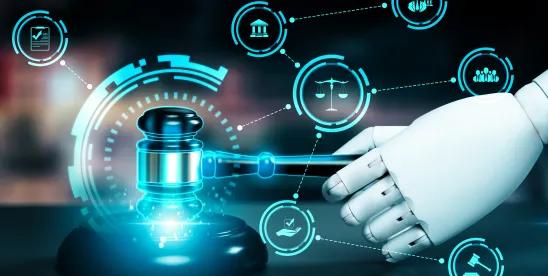The U.S. Patent and Trademark Office continues to seek stakeholder input on AI-generated disclosures and patentability. Earlier this year, USPTO issued a public Request for Comment on the impact of artificial intelligence on prior art, the known understanding of a person of ordinary skill and how this effects patentability, specifically novelty and obviousness of a claimed invention. Additionally, the Office is hosting a listening session on these topics virtually and in person later this summer. The inquiries are significant and potential rule changes at the USPTO could completely upset the apple cart. In short, if AI-generated prior art is deemed known to the person of ordinary skill and can be used to destroy patentability, the role of novelty and non-obviousness from a human perspective may be minimized. We explore here the potential consequences of AI for our assessments of human invention.
The Impact of AI on Prior Art
AI can be used to explore multiple seemingly infinite permutations of inventive concepts. If AI-generated permutations that pre-date what would otherwise be a patentable invention are deemed to be prior art, the potential for patenting of human ingenuity may be whittled away.
No matter how obscure the prior art reference, the fact that a reference is available and predates the filing date of the claimed invention is enough to create the rebuttable presumption that it constitutes prior art known to the fictitious construct, a person having ordinary skill in the art (“PHOSITA”). AI-generated permutations could be made available in the normal way by humans, e.g., included in a traditional publication. Alternatively, AI-generated permutations might be deemed “available,” e.g., because they are retained by the AI program. If so, the volume of AI-generated prior art could become so large that no human has actual knowledge of a particular permutation. However, once the patent application is filed, a searcher might uncover documentation of a permutation created by AI that pre-dates the claimed invention. In this way, an invention might be conceived which would otherwise be eligible for patent protection, but the patent might be blocked by AI-generated “prior art.”
Under these scenarios, the volume and scope of AI-generated prior art could create such a barrier to the patentability of inventions that it blocks the reward of a patent for most human ingenuity. The question is: should AI-generated prior art render an invention obvious or destroy novelty, even though no human being had actual knowledge of the documentation at the time the invention was made? Should pragmatism and perception prevail, much like asking if a tree falls in a forest and no one is around to hear it, does it make a sound? If sound is defined as the presence of a vibration, rather than the experience of one who detects those sounds, then of course it does. Likewise, AI-generated art could destroy patentability, before any human ever knows about it.
The Impact of AI on a PHOSITA
An invention that would have been obvious to a person of ordinary skill before the effective filing date of the claimed invention is not patentable. Currently, obviousness is evaluated from the viewpoint of what the fictitious PHOSITA knows. The person of ordinary skill in the art is, as the term suggests, a person presumed to know the relevant prior art.
In response to prior inquiries from the Office, some commenters reasoned that AI machines are not “persons,” and, therefore, AI should not affect the PHOSITA assessment. There are at least two issues with this. First, from a broader legal perspective, the construct for a “person” being defined as something other than a human being is not far-fetched. The idea of corporate personhood has been part of US law for over a century. The PHOSITA could be something other than a natural person and could include AI entities. Second, and as discussed above, AI-generated ideas and documentation could constitute prior art under the current law if they were available to a human PHOSITA – even if not actually known to any human being at the time of their creation.
AI is quickly advancing and this may force the Office to shape policy on the issue of whether the level of ordinary skill in the art as encompassed by the PHOSITA can be something other than a natural person. The question here is can the PHOSITA be an AI system or must the PHOSITA have a human element, for example, for the same reasons that an inventor must be human? Since AI can access and utilize large amounts of data, its knowledge is far beyond what any human inventor could ever know. Thus, AI could potentially have skill in an art that is not “ordinary” as compared to an inventor, which must, according to current law, be human. Thus, allowing the PHOSITA to be an AI system would be unfair. If the PHOSITA is an AI system, then non-obviousness could morph into an impossibly high standard for any human to overcome.
A more practical approach is to view AI not as the PHOSITA, but as a practical tool used to enhance the abilities of the PHOSITA. The level of skill in any art has traditionally grown over time based on the introduction of new technologies. As AI systems become more ubiquitous, so too should the PHOSITA’s access to them.
The Implications of AI That Could Require Updated Examination Guidance
The Office recently updated its inventorship guidance for inventions assisted by artificial intelligence. While declining to make any rule changes regarding disclosing the use of AI for papers submitted to the Office, the Office stated that AI entities cannot be named as inventors, which is in line with the 2022 Federal Circuit decision in Thaler v. Vidal. However, an individual associated with an AI-assisted invention can be deemed an inventor when the individual has made a significant contribution to the claimed invention.
This met with some criticism from commenters, including the American Bar Association’s Section of Intellectual Property Law and the Council for Innovation Promotion (C4IP), a group consisting of former directors of the U.S. Patent and Trademark Office from previous Democratic and Republican administrations. C4IP took the position that under this guidance, inventors who use AI to innovate and then seek patent protection will be faced with uncertainty throughout the examination process and afterward during any validity challenges. The invention would be clouded with the possibility that their “human” contribution was not enough.
Other organizations like the Intellectual Property Owners Association (IPO) supported the position taken by the Office and applauded maintaining the status quo even for AI-assisted inventions. Still others stated that AI is like any tool used to assist the invention process and is incapable of conception, which is the touchstone of inventorship. Thus, inventions that use AI are no different from the use of other tools an inventor might use. As one commenter noted:
Just as the existence of test tubes impacts the level of a person of ordinary skill in the chemical arts, and just as the existence of general purpose computers impacts the level of a person of ordinary skill in the software arts (and many others), so [too] would AI affect the level of skill in the arts where it can be made useful.
Leveling-UP: The Implications of AI That Could Require Legislative Change
Statutorily, an invention that would have been obvious to a person of ordinary skill before the effective filing date of the claimed invention is not patentable. As reiterated by the Supreme Court in KSR International Co. v. Teleflex Inc., obviousness is a question of law based on underlying factual inquiries. These factual inquiries include the scope and content of the prior art, the differences between the claimed invention and the prior art, and the level of ordinary skill in the art. Obviousness is assessed from the view of the PHOSITA and considers what this PHOSITA would have known or understood, including from AI systems.
Commentors have some thoughtful and interesting observations on this point. Wake Forest University Law Professor Raina Hague notes that the obviousness framework codified in section 103 provides the durability and flexibility to change as AI and its usage changes. She reasons that since the patent statute mandates judging obviousness “at the time the invention was made,” examiners must consider the sophistication of generative systems available to the PHOSITA at the time of the invention, which is, at the latest, the time of the first application. Thus, rather than asking for legislative overhaul, we should stick with the reliable and time-tested requirements of obviousness using the paradigm of the human perspective and consider AI to be a tool like any other.
Takeaways
The Office seems genuinely curious and open to hear various stakeholder views regarding the impact of AI on the realm of prior art, the conceptualization of the hypothetical person of ordinary skill, and the assessment of novelty and non-obviousness of human inventions. It will be interesting to see whether perception or pragmatism wins the day.
As with most things related to law and policy, a cautious and steady-handed approach may be best. It may be premature to overhaul the rules or the statutes based on the threat of what AI might become. We don’t know how the paradigms for assessing novelty and obviousness might need to change in the future to accommodate the impact of AI, but we should consider that AI will become as ubiquitous as any other tool that humans use to create. As it does, then we can reassess. At least for now, prior art and the level of skill in the art are assessed from a human perspective and we should be cautious before changing that. Unlike a tree falling that no one hears, AI is more akin to an ax in the hands of an artisan. In other words, without the ax strike of human intervention, AI in its current state cannot achieve anything on its own and is simply a tool that should be used to enhance, not block patentability of human ingenuity.




 />i
/>i

